It’s winter, and as usual my eye craves big pots of rotund, evergreen orbs and cushions in the Mien Ruys, Dutch style. Closer to home, Sara Malone at Circle Oak Ranch in Northern California, makes a creative argument for the year-round joys of evergreens. I’d mass them in phalanxes, dot them here and there. This recurring winter garden dream tends to evaporate every spring at the grim thought of shepherding this herd of potted green orbs through the dry season. Maybe I could rig some irrigation for them in an unused corner? (What unused corner?) Easy evergreens like box and westringia would be the obvious choice here in zone 10, but there is a tempting Hebe sutherlandii at the local nursery. There is a reason Southern California no longer plants hebes in the ground, which was a widespread practice at one time, and you will discover this reason at the end of this lengthy narrative posted in September 2015, entitled “the case of the disappearing hebes.” Time does march on: Banksy the cat now resides with us, and our great friend Ein passed in 2017. Hope you’re enjoying this post-holiday week.

I was in San Francisco recently for several days cat-sitting a charming fraidycat in the Mission district named Banksy. It was during this trip that I solved the case of the disappearing hebes, those lovely little shrubs from New Zealand. Because I just can’t seem to acquire a photojournaling habit of anything but plants, I’m borrowing some of Jessica’s wonderfully expressive photos to fill in the cast of characters.
photo from Thread and Bones
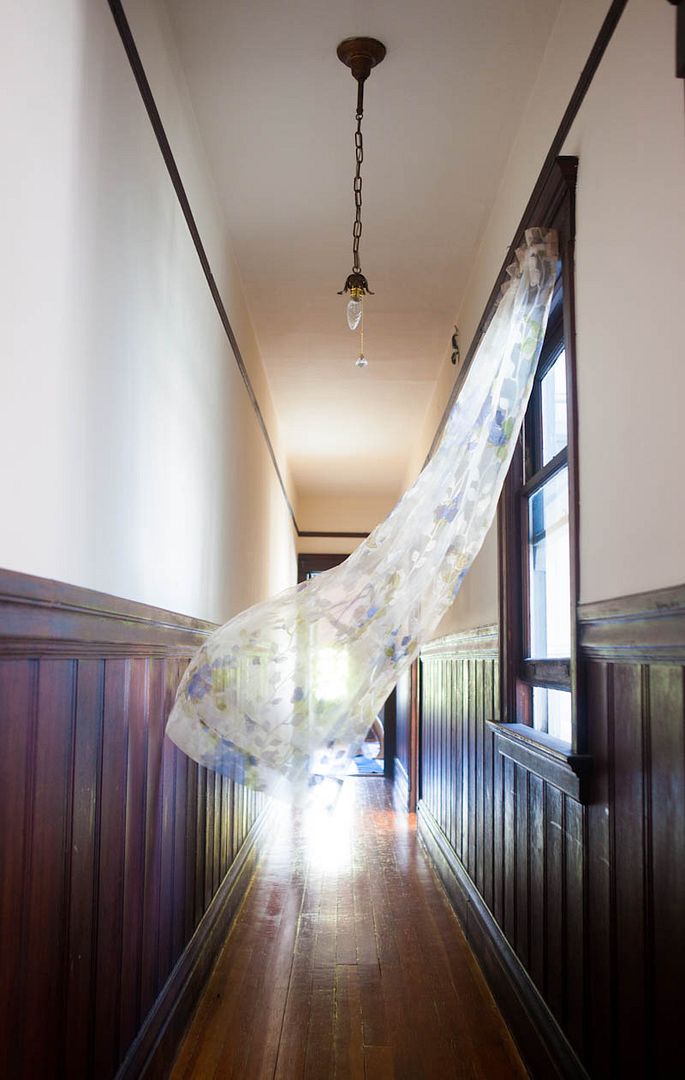
photo from Thread and Bones
This hallway was definitely a character on the trip. Since this photo was taken a couple years ago, it has been covered, and I mean every inch of it, with throw rugs. Because of the rugs, the apartment has taken on the personality of 221B Baker Street. Also because of the rugs, the downstairs neighbors were spared the deafening knowledge that a corgi had taken up temporary residence and was delighting in thundering up and down that hallway. After a quick visit with Mitch and Jessica the night before they left for some lengthy photo work, we had the “railroad” apartment to ourselves for five days. Banksy pretty much kept to his room, the middle bedroom, and we had the front, streetside bedroom.
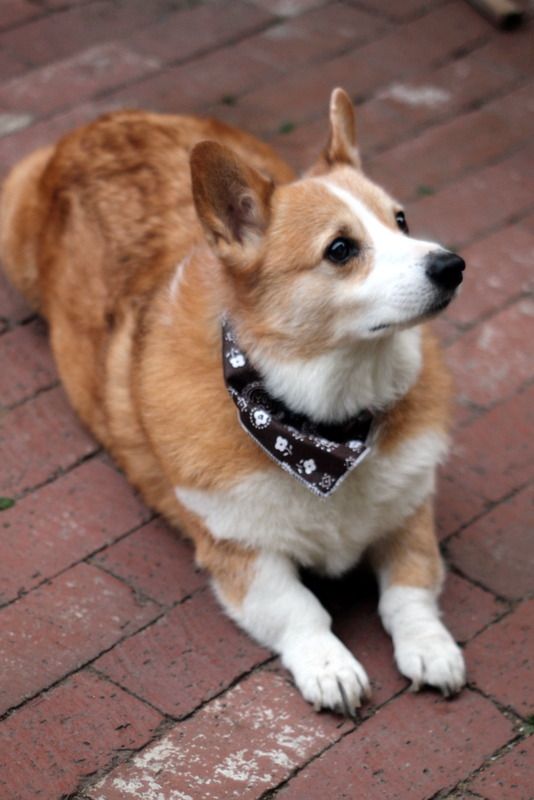
So it was the four of us, me, Marty, Ein, and Banksy, and that long hallway, where the curtain billows all day just as in the photo.
Ein emptied out the kibble from the cat bowl only twice, showing amazing self-restraint…for a corgi.
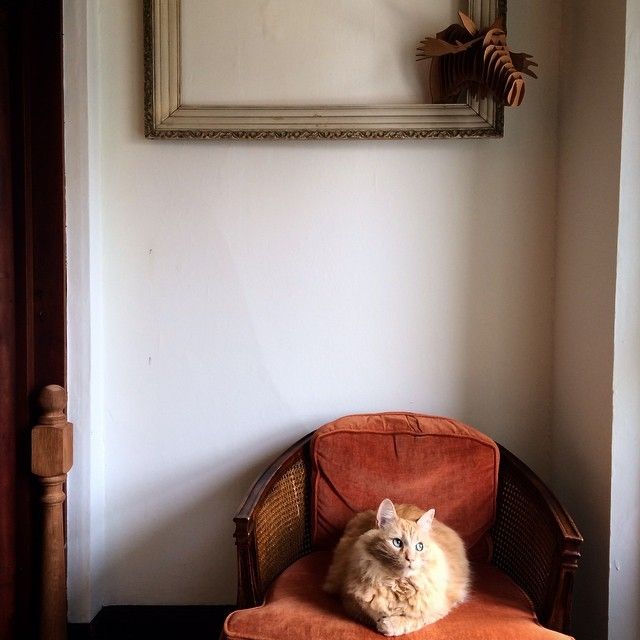
photo from Thread and Bones
Banksy and Ein, while not exactly enemies, didn’t become best friends either.
We were thrilled to be leaving the stifling heat in Los Angeles for the legendary cool summer environs of San Francisco. Surprising both us and the mostly non-air-conditioned residents of San Francisco, the heat was stifling there as well. The Mission hit 100 degrees the day we arrived.
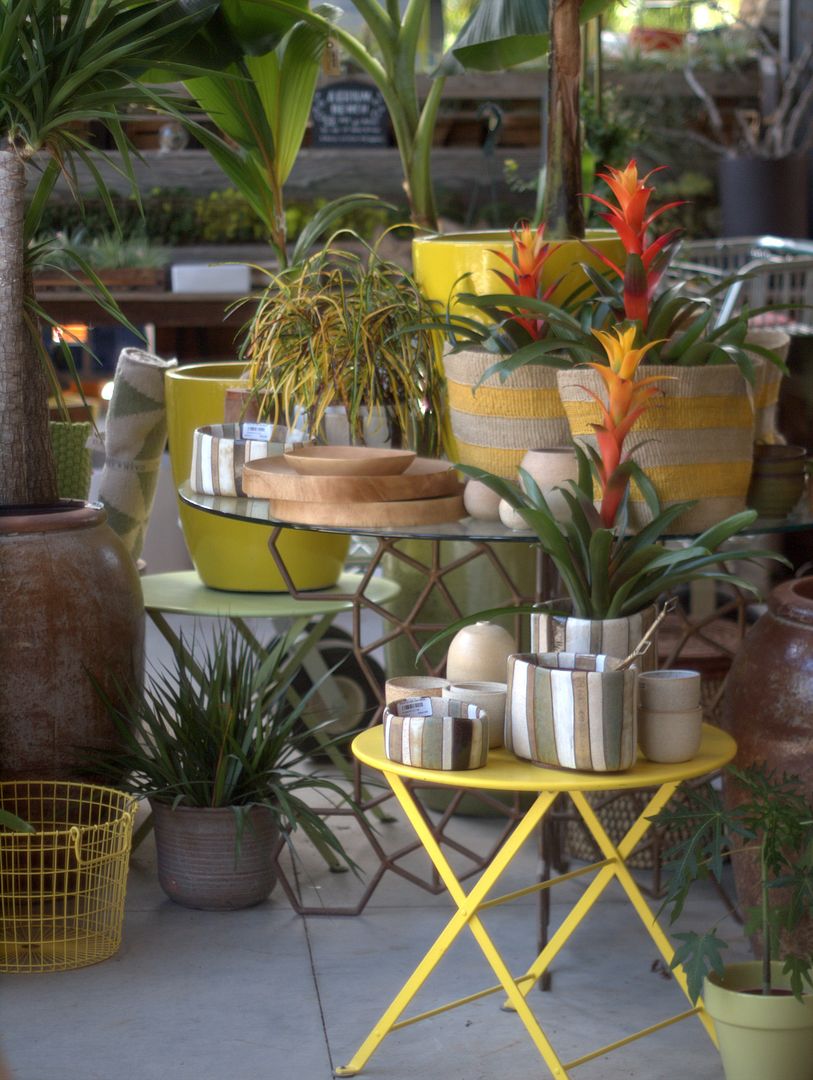
While in the city, of course, there was the ritual trip to Flora Grubb Gardens
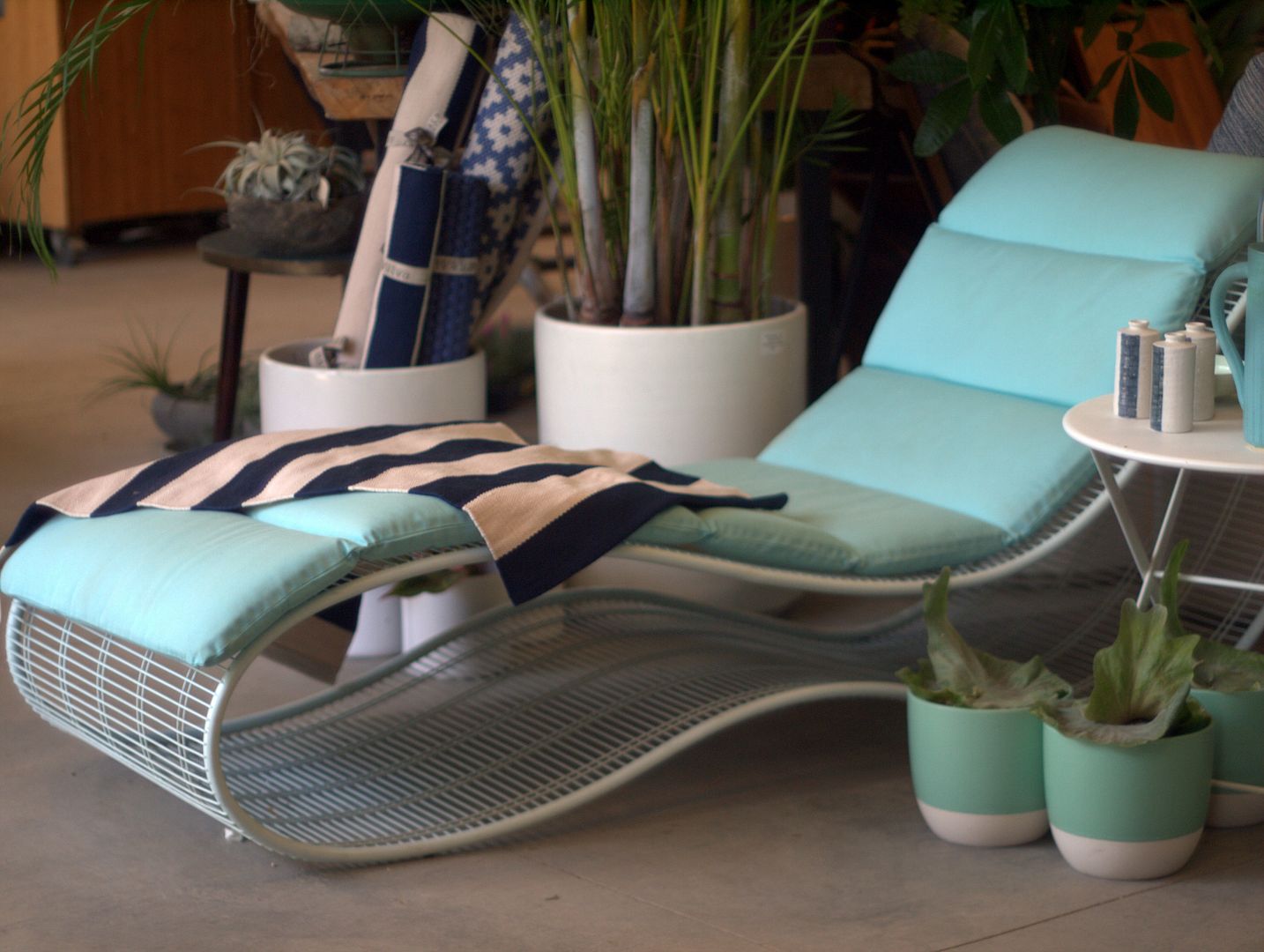
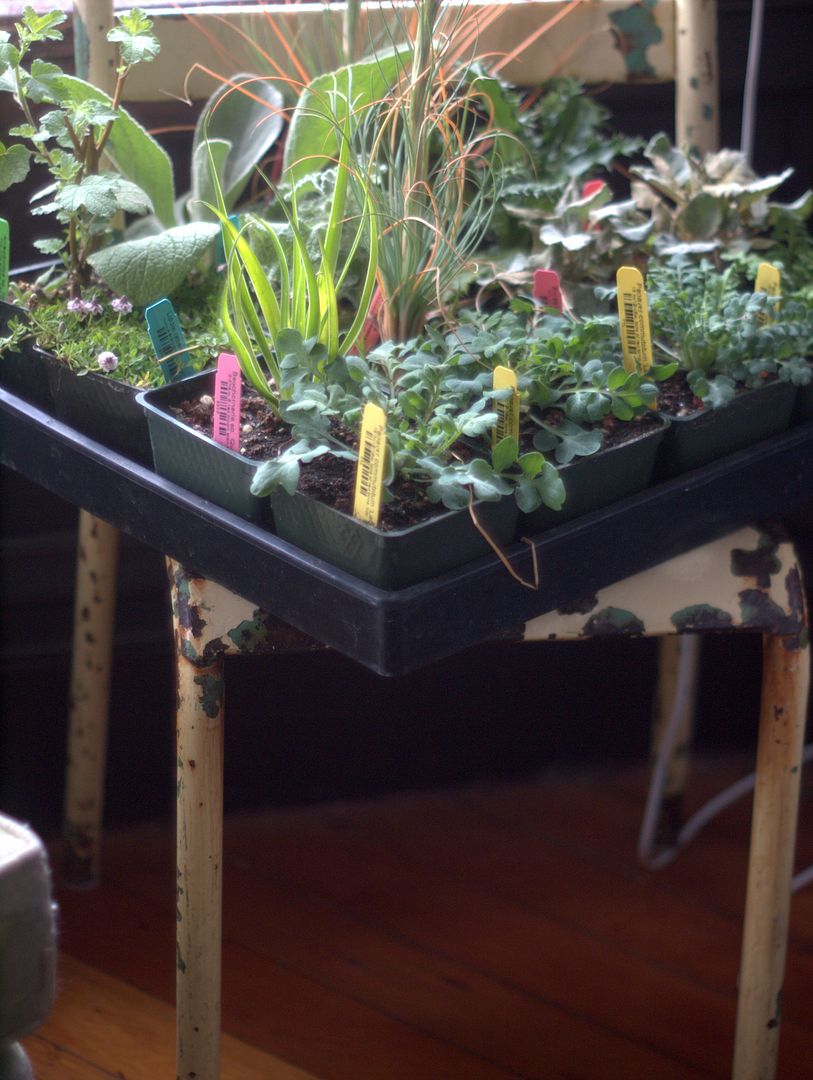
and the required visit to Annie’s Annuals & Perennials in Richmond, timed nicely with fall planting.
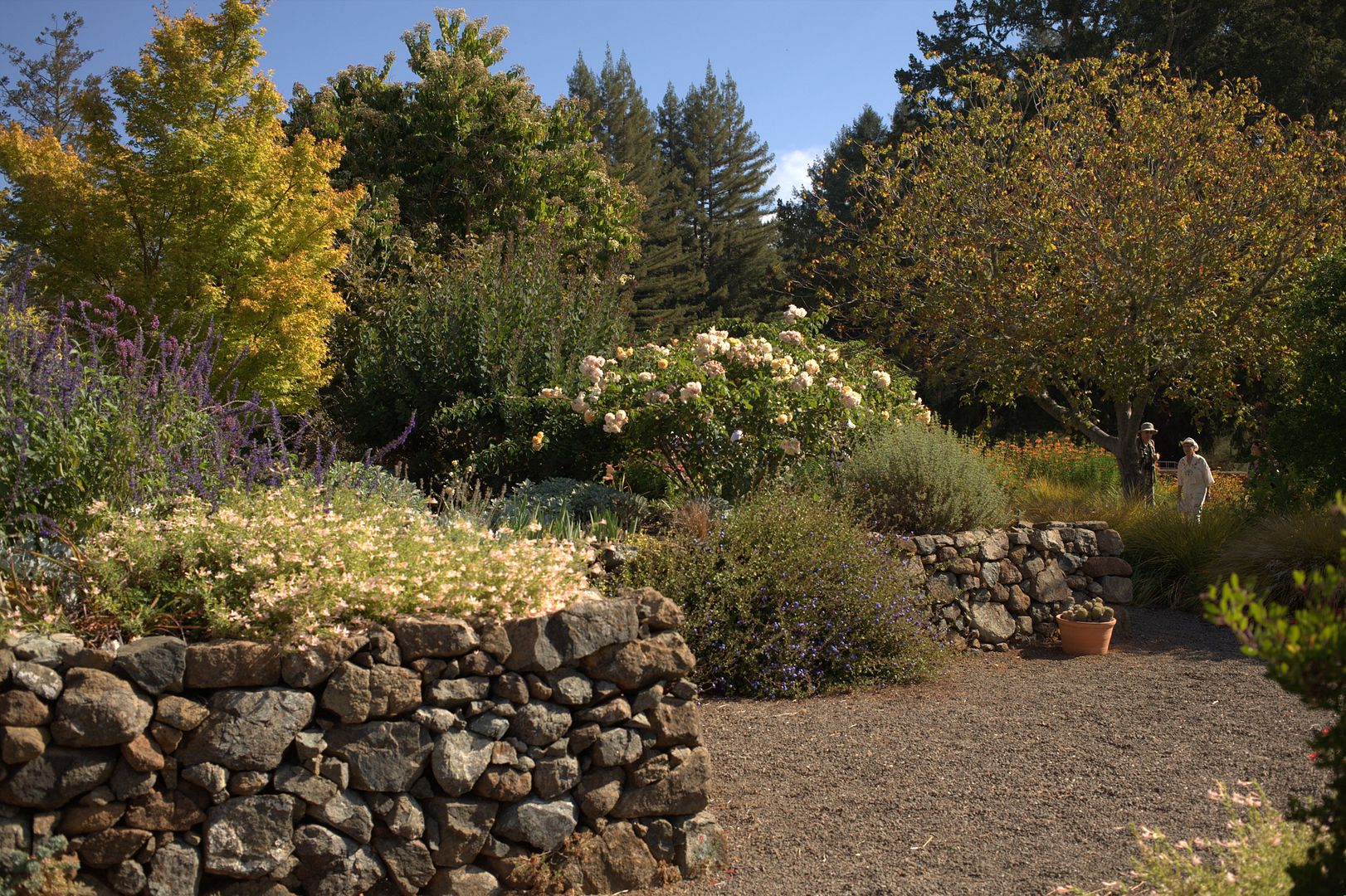
I also horned in on a tour of the Reid garden near Sebastopol via my very nice contact at the American Conifer Society, Sara Malone, whose own fabulous garden at Circle Oak Ranch was also on the tour. Unfortunately, I only had time for the early morning visit to the Reid garden and had to get the car back to the city.
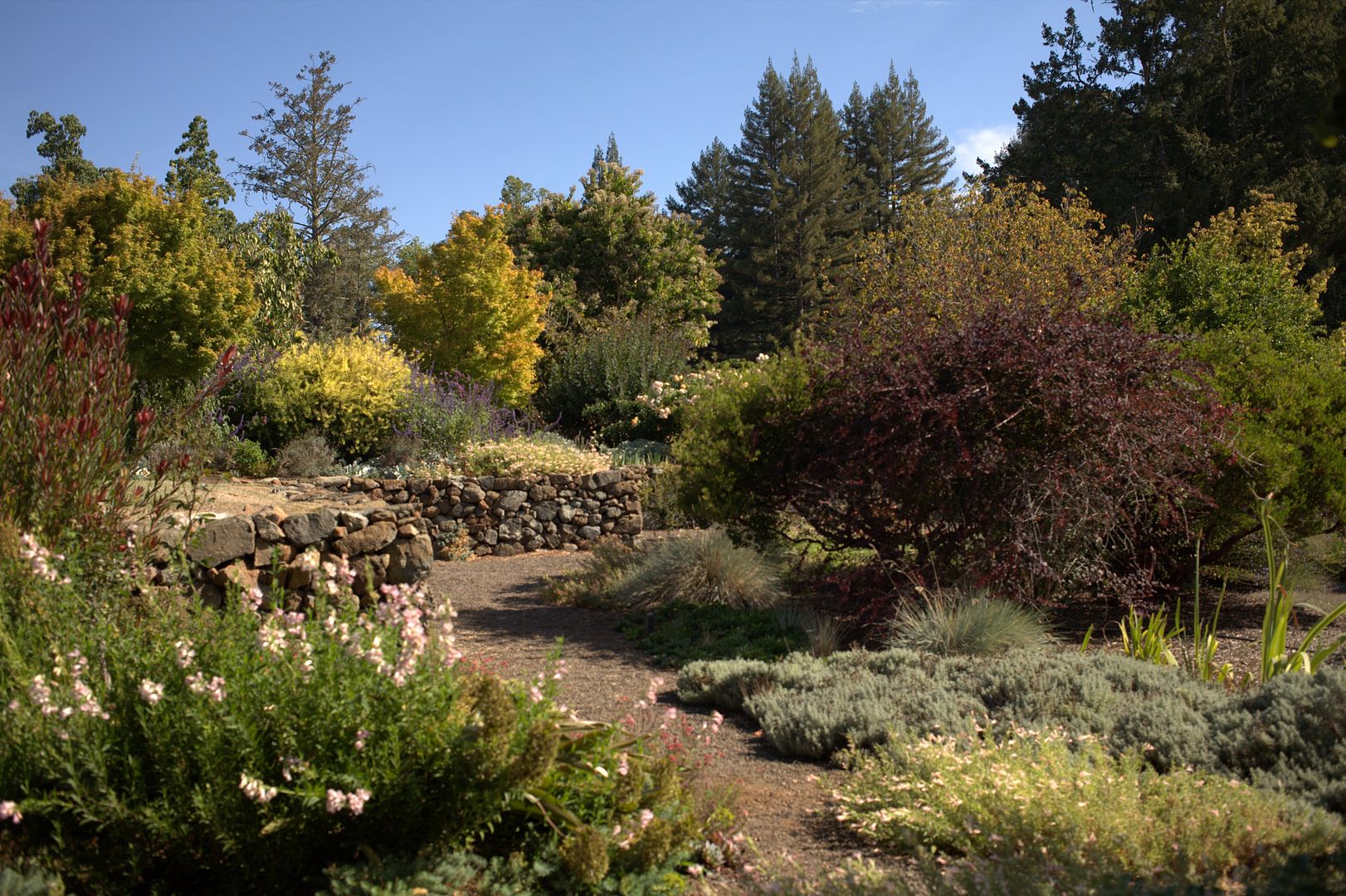
Glimpse of a mature leucadendron on the upper left. I think the garden is likely in zone 9. Penstemons, zauschnerias/epilobiums, ceratostigma and salvias were in bloom, with some roses having a late-summer flush.
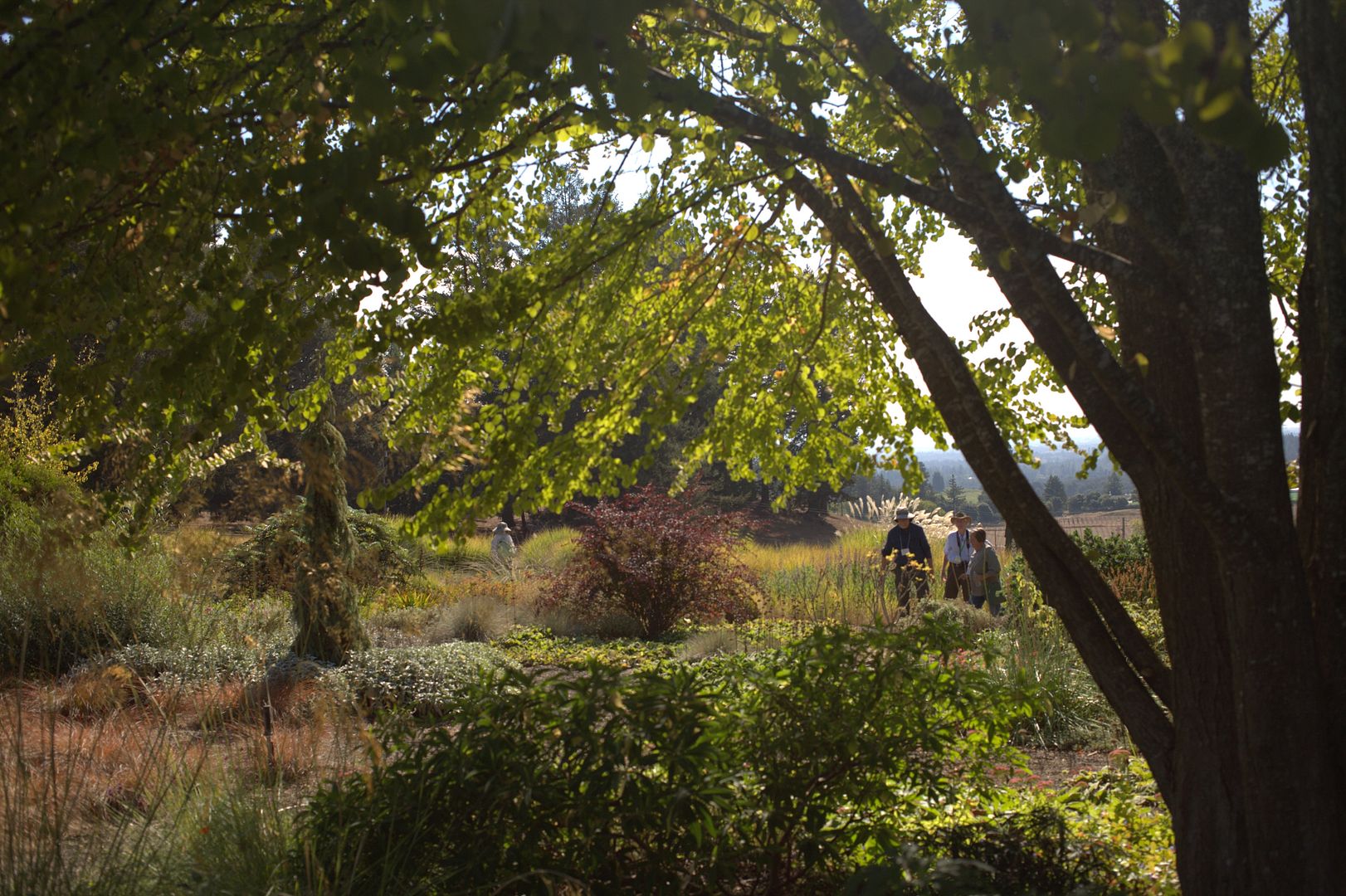
The garden has incredible atmosphere and spatial presence built up over decades of deeply informed selection and placement of beautifully appropriate plants.

The Reid garden is not at all conifer-centric, but a wonderful mix of dry-adapted trees, shrubs, grasses and perennials.
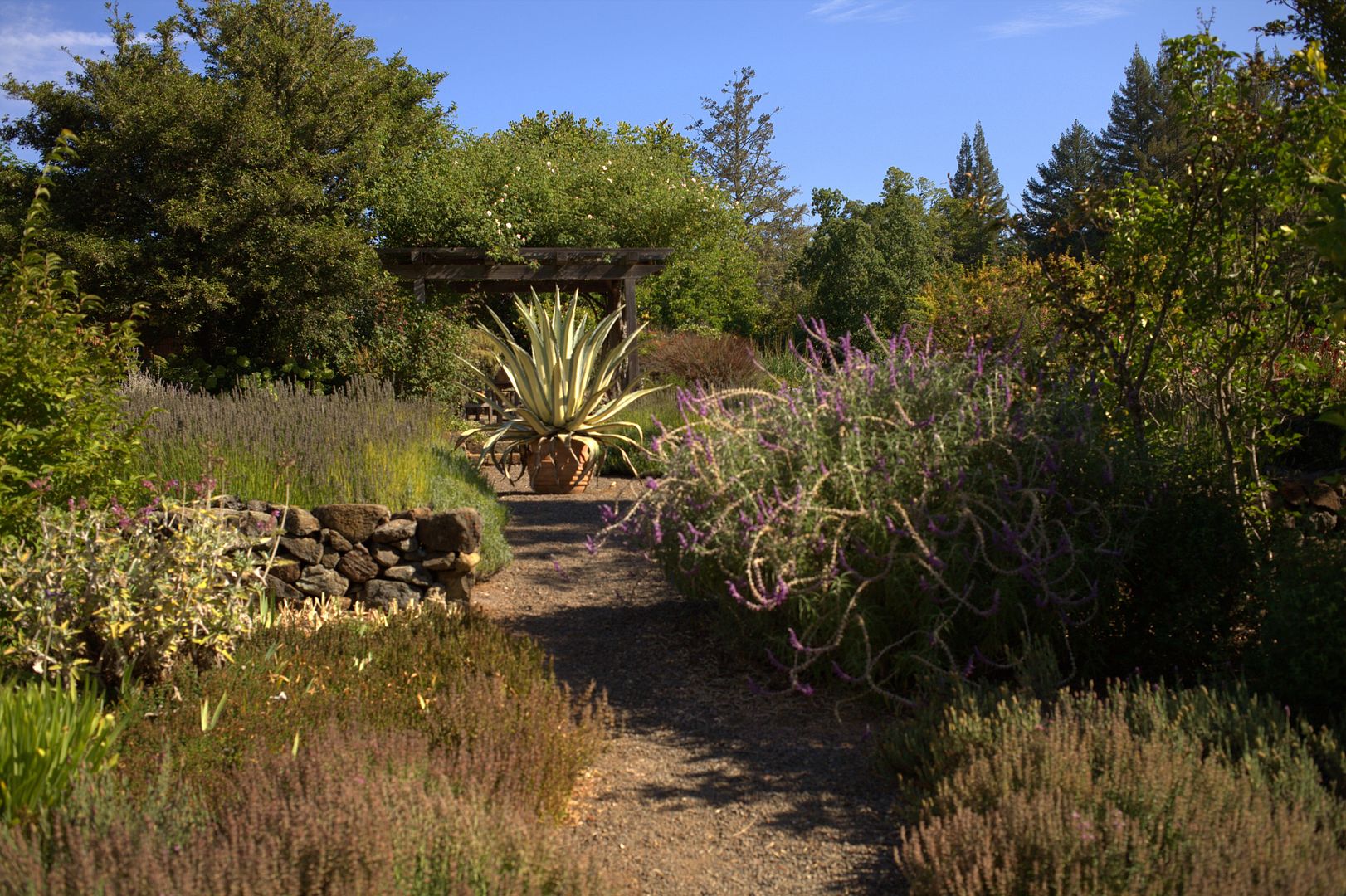
I believe the rose on the arbor behind the potted agave is ‘Mme Alfred Carriere,’ a creamy, very fragrant climbing noisette.
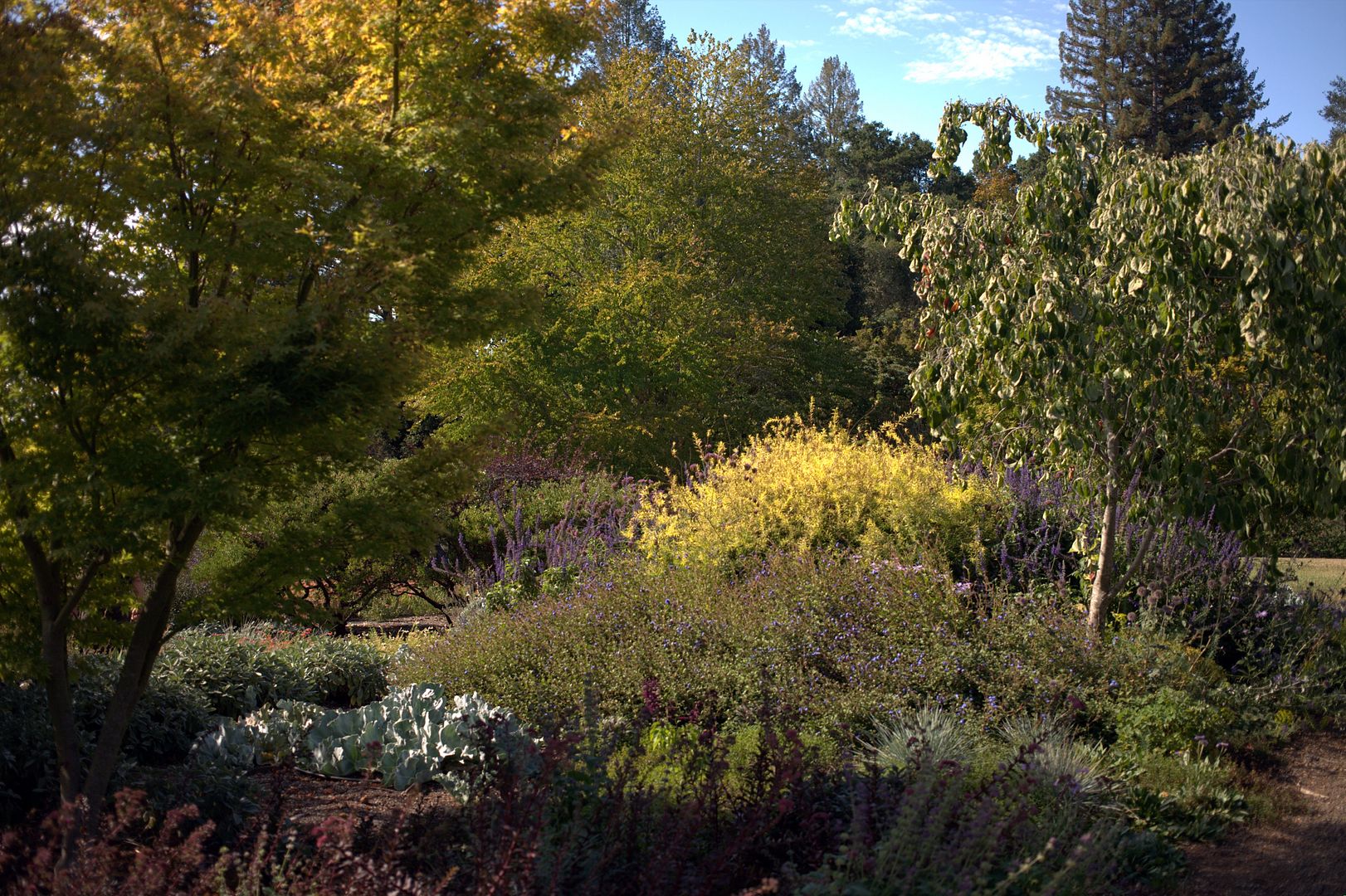
The blue pool on the lower left is Crambe maritima. Mine have done remarkably well all summer on restricted irrigation.
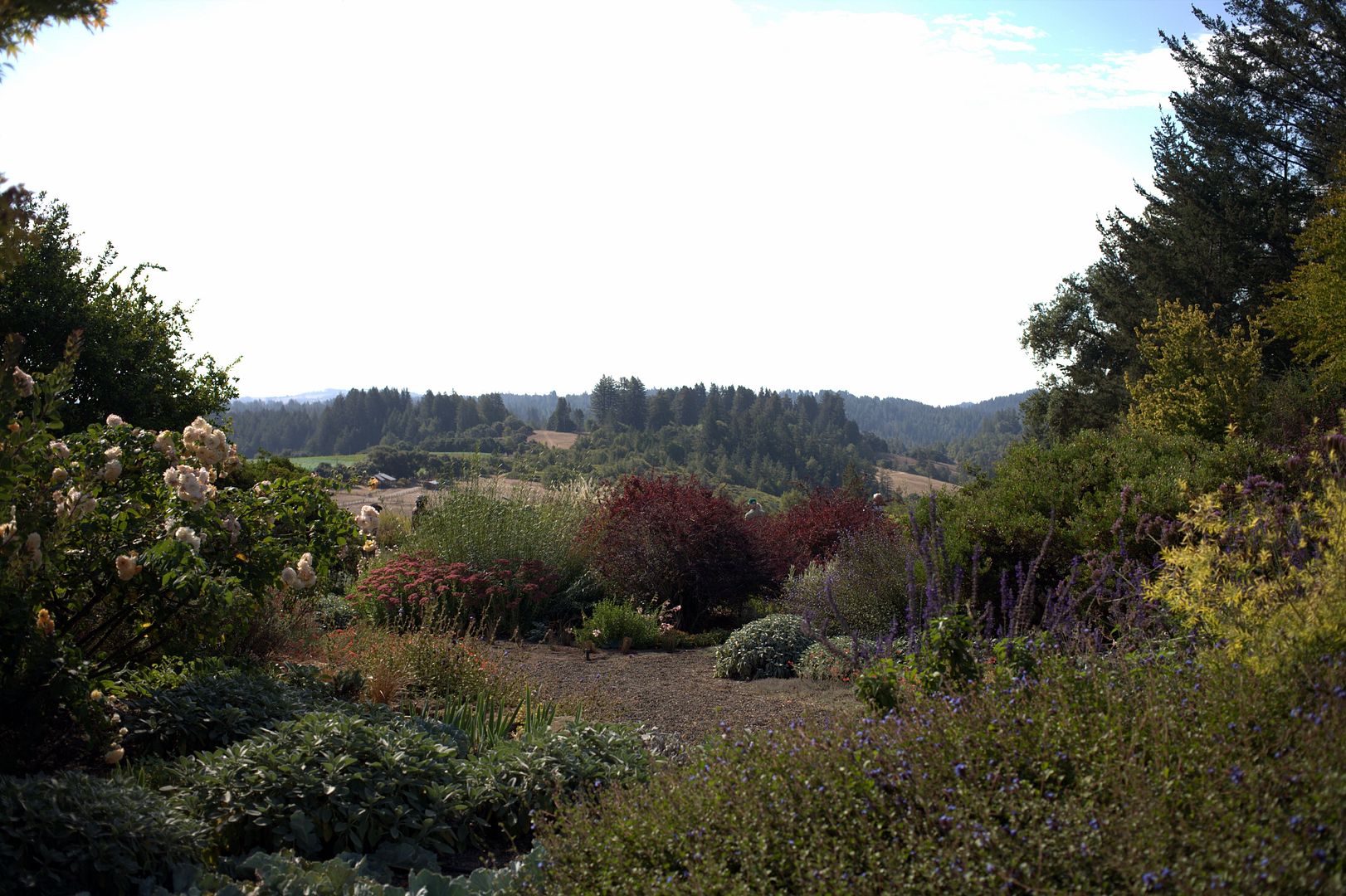
I’ve wanted to see this garden since learning of it through Pacific Horticulture.
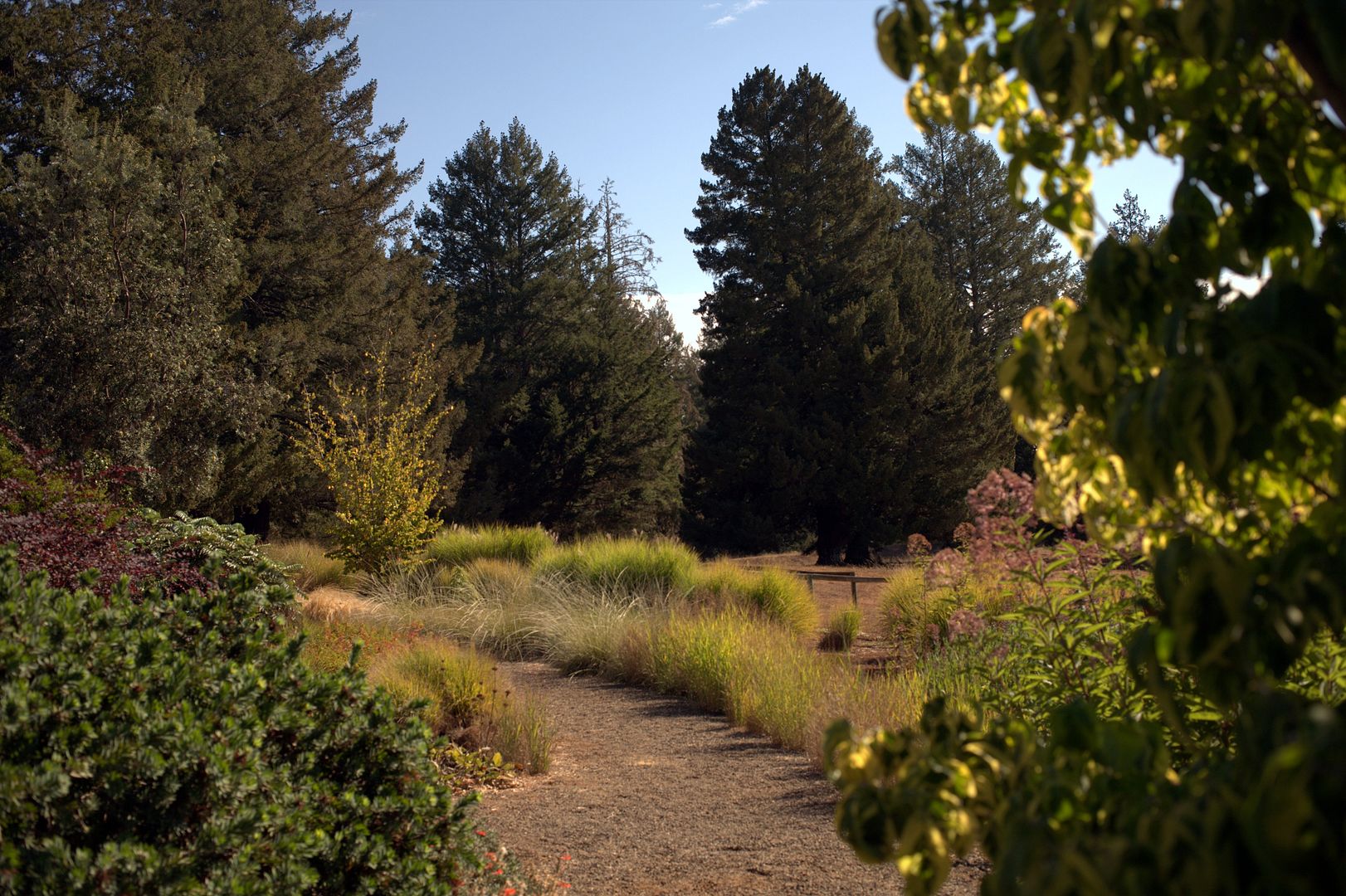
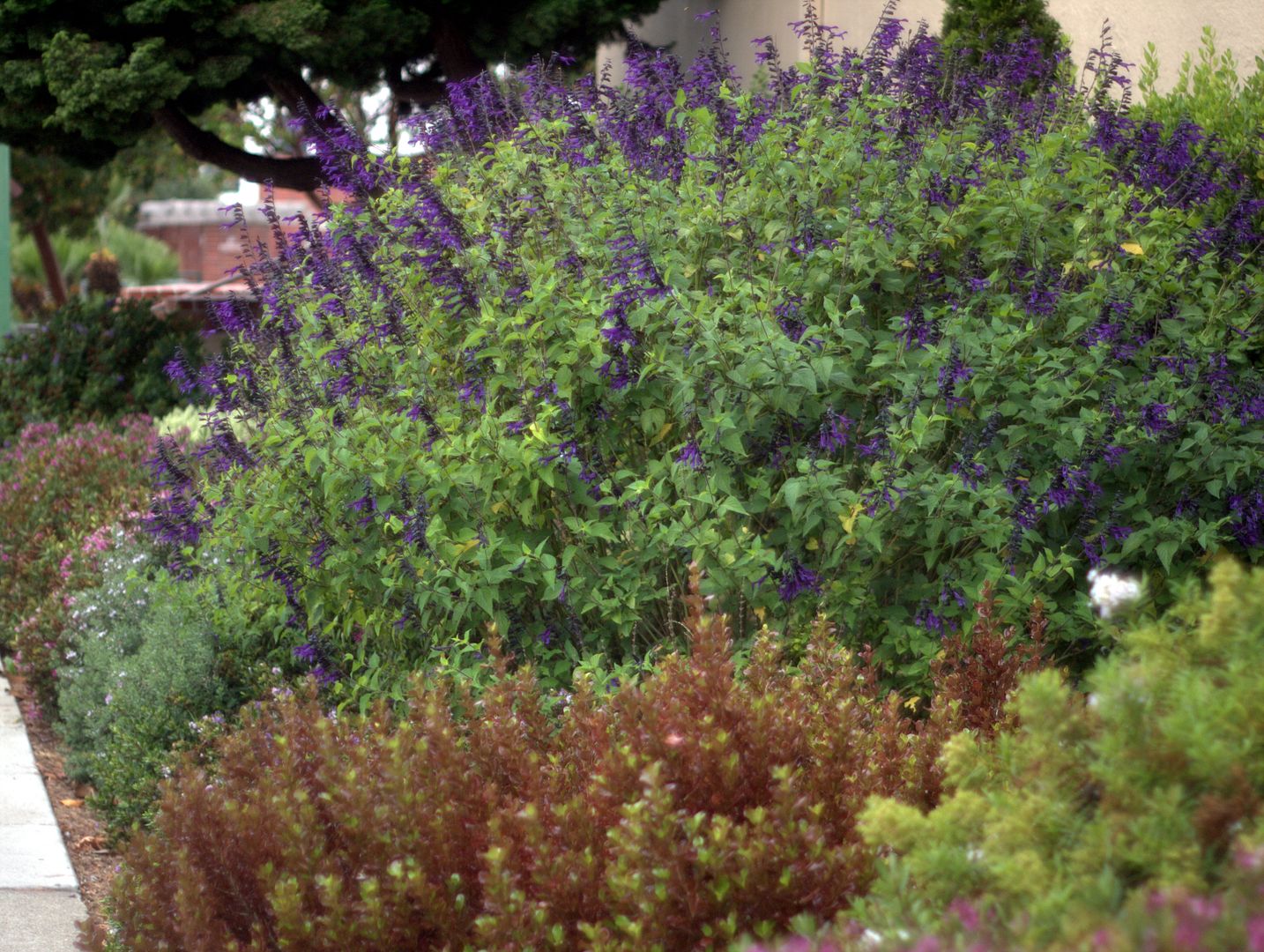
Back to the case of the disappearing hebes. I confess I hadn’t thought about hebes in years and hadn’t even noted their disappearance from SoCal.
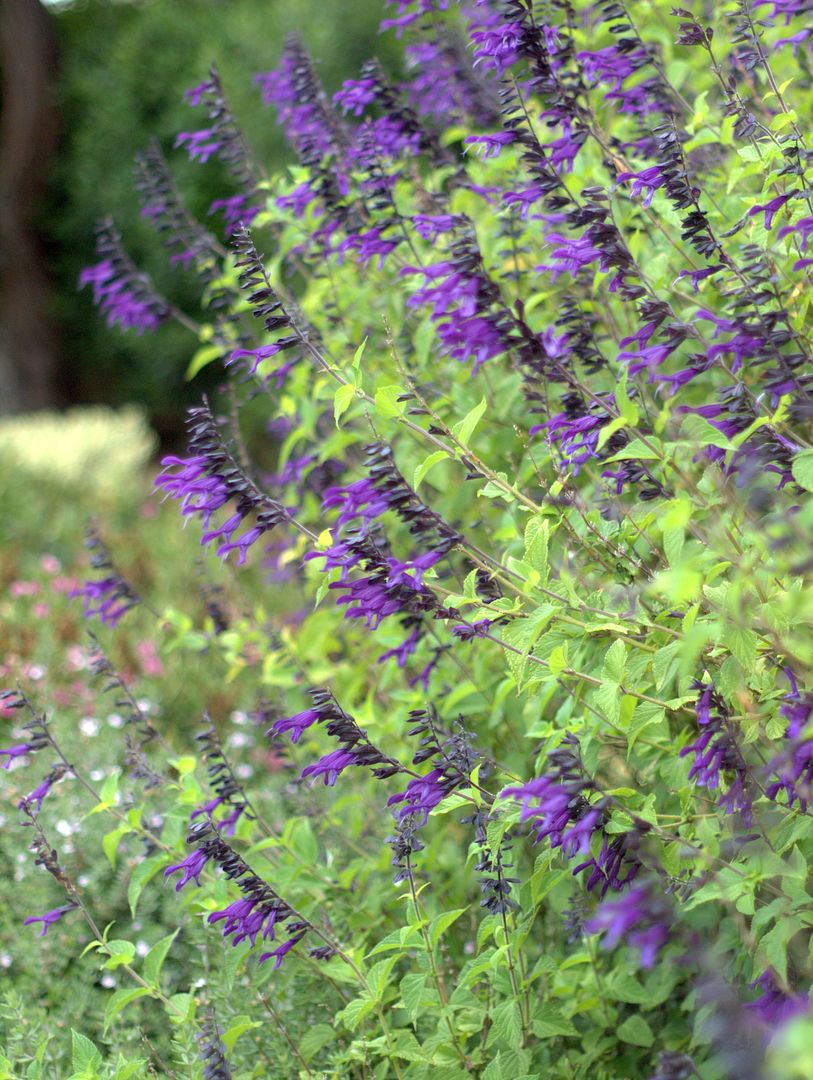
Along with traipsing through spectacular gardens, there were mundane chores to do in the city as well, like laundry. Needing the services of a Laundromat and finding the one familiar to us in the Mission shuttered, we headed to the Marina district. Which is where I found this majestic stand of Salvia ‘Purple Majesty.’ I dropped off Marty and Ein at a nearby Laundromat and promised to bring back food. But first I needed to examine these enormous clumps of salvia. They were admirably dense and uniform in habit, unlike the rangy specimens I grow. This planting is at the George Moscone Recreation Center.
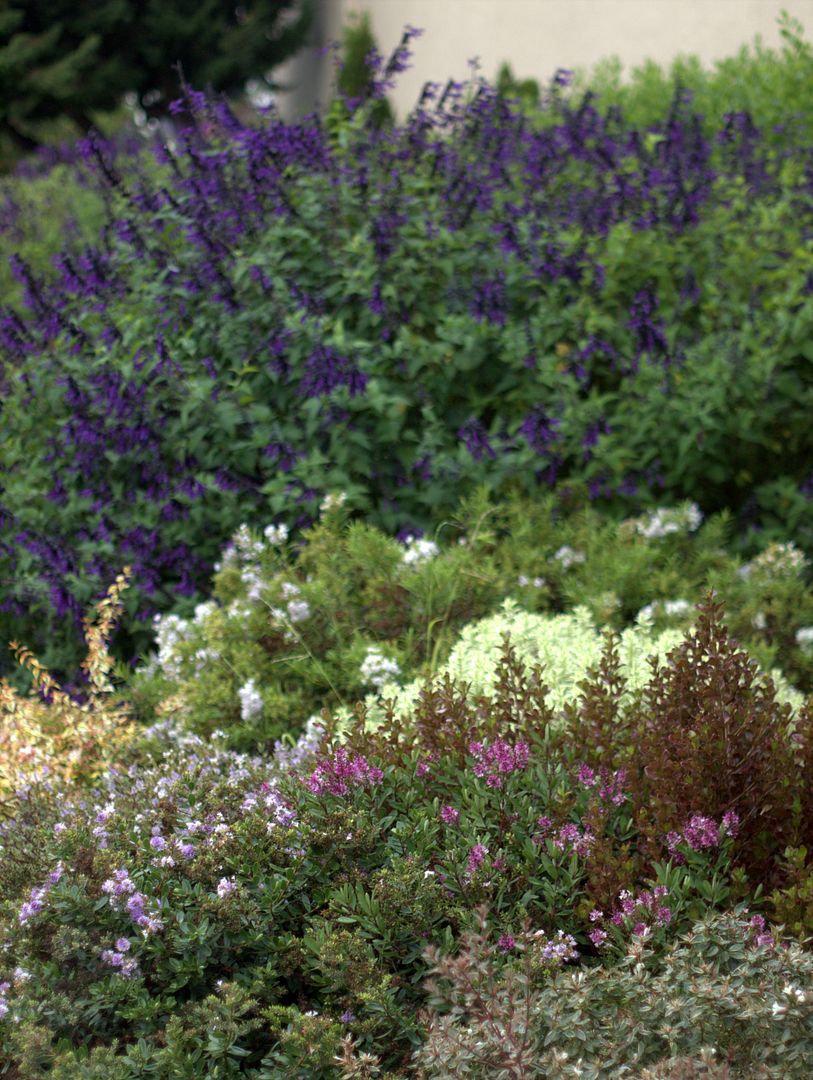
The shrubs surrounding the salvias were just as remarkable. Hebes! Beautiful New Zealanders. I haven’t seen hebes for ages.
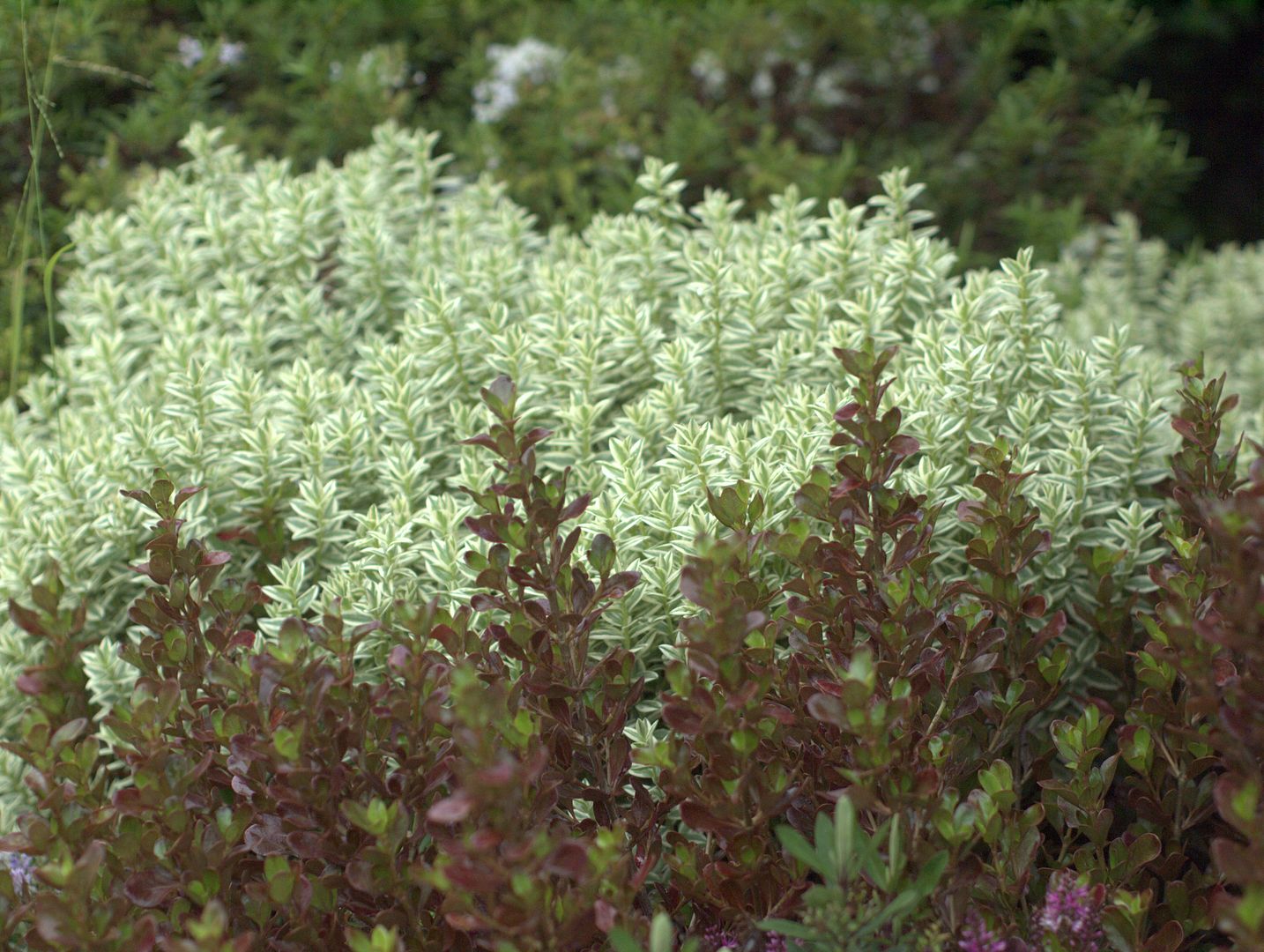
Ruddy coprosmas with pale, variegated hebes.
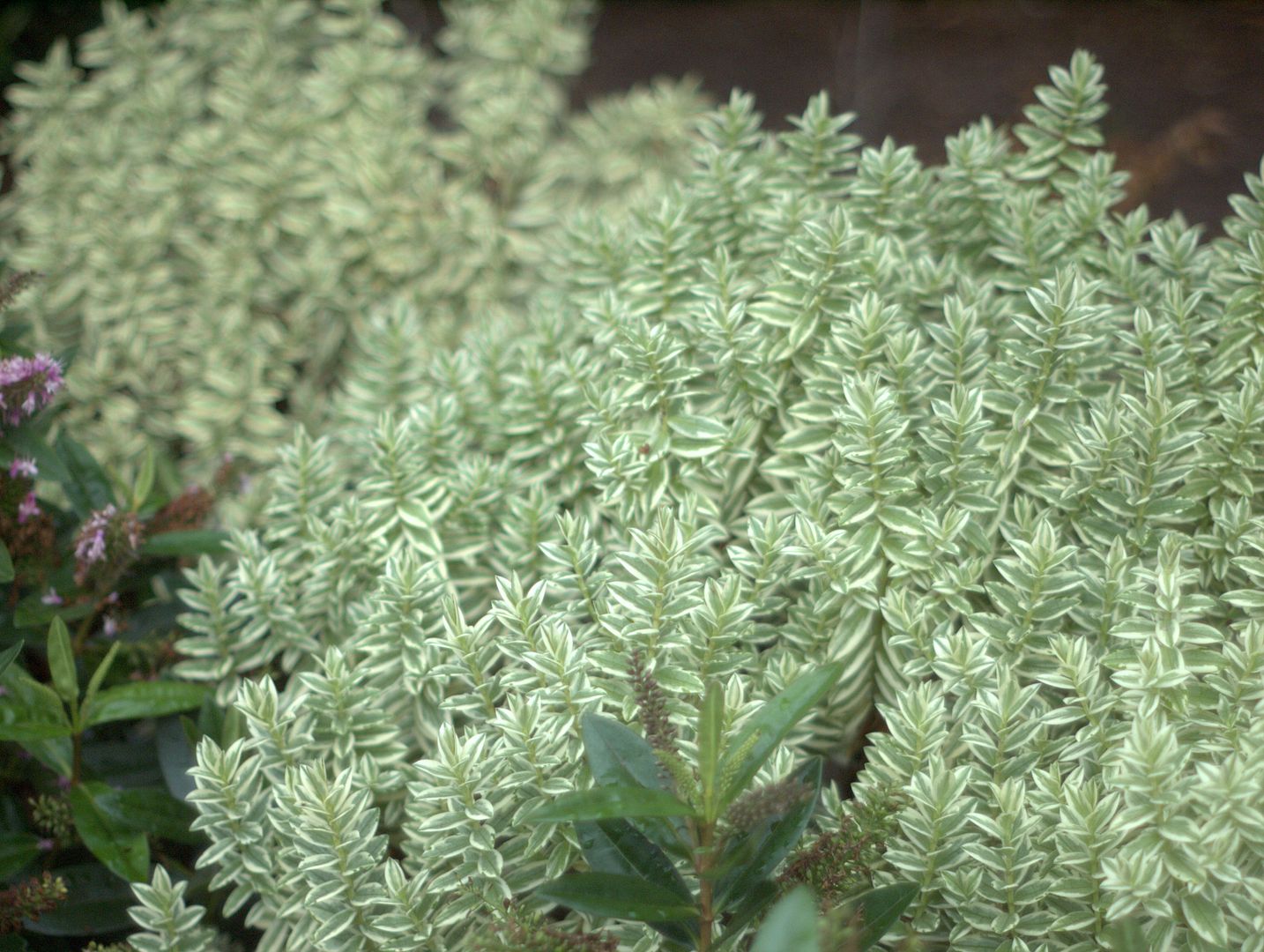
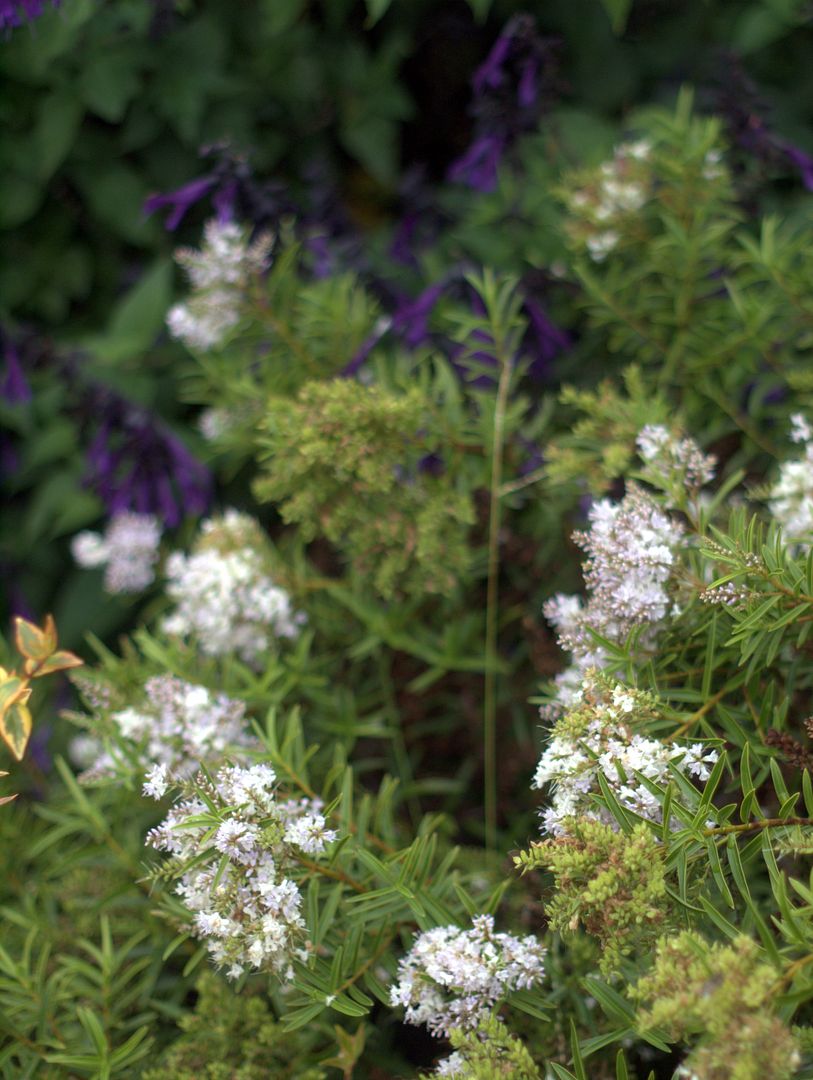
There used to be hebes in Southern California. Where had they all gone? Is changing fashion ruthless enough to cause complete eradication? Possibly, but even more ruthless is Fusarium oxysporum v. hebei. From the Monterey Bay Nursery website:
“[F]ormerly important stalwarts in California landscaping, but now essentially extirpated due to the introduction of Fusarium oxysporum v. hebei. This disease persists in soils and nursery beds for years, and induces systemic, incurable stem infections which ravage landscapes and commercial crops. By the early 1990’s hebes had essentially left the commercial trade in California.”
Rather than choosing for flowers, my favorites have always been “those with tight, dense, box-like foliage in grey or green, and the whipcord types with minute, scale like leaves and stringy branches…
Some of the smaller leaved types can be more resistant, may be tested in the ground, but don’t come crying to us if they die. You have been forewarned!”
I have no idea what chances for longevity the hebes at the Moscone Rec Center have, but they appear for now to be in robust good health. I personally have no problem with short-lived plants, say three to five years. I love the changeover. But public landscapes are on different timetables.
Upon returning home, awaiting me was the July issue of Gardens Illustrated with, of all things, an article on hebes by Noel Kingsbury.
Famous for championing the “new naturalism,” comprised of perennials and grasses, Mr. Kingsbury struck me as an unlikely proponent of these tidy shrubs, but the man knows his hebes. He describes the changing fortunes of hebes as falling in and out of favor relative to garden styles, whereas in California the reason for their disappearance is not mercurial tastes but insidious pathogens.
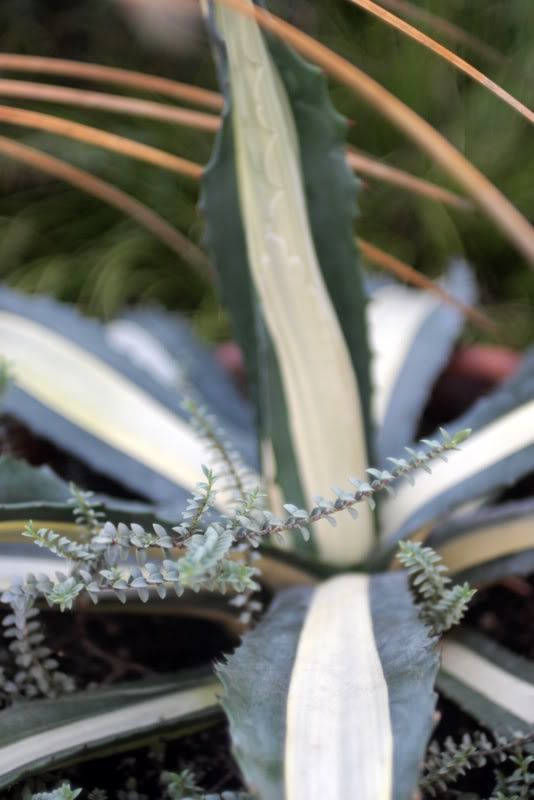
Hebe ‘Quicksilver,’ photo from 2010
The next time I find a Hebe ‘Quicksilver’ at a nursery, I’ll know its chances for survival face much better odds in a container than in the garden.

There is a bit of the ‘ They came at night’ about that hall way . I did watch it last night , so excuse the comparison .
Hebe ‘Quicksilver’ is a good one. Funny, I remember that hallway shot from the original post. It’s a good one.
Hebes! Perhaps I should review my blanket disregard. Cheers Denise.
Incredibly interesting & gorgeous photos to boot. I like: “the man knows his hebes.” lol. I also love seeing bits of SF, having moved down from Oakland a couple yrs ago now. Thank you for the post!
Ahh, San Francisco… The evocative hallway window shot brings up the memory of the astonishment in my very southern godmother’s voice when, just back from her first visit to SF, she reported that none of the windows have screens, “because there are NOEW BUHHGS!”
Thinking about your winter garden cravings, and wondering if there isn’t an opportunity there for some enterprising nurseryperson: rent-a-pots that get returned when the spring/summer gardens fill out.
It must have been hard to tear yourself away from the Reid garden; it’s just about the most peaceful plantsman’s garden I’ve ever seen.
The Reid garden looks magnificent. The luxury of space!
Too bad about Hebes–there were many beautiful species at the Santa Cruz botanic garden–perhaps the pathogen doesn’t like beach towns, or it has not gotten up there yet.